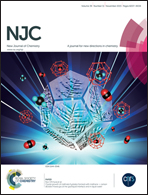Temporal wetting property of “Micro” versus “Nano” rods of ZnO grown using the pressure dependent aqueous solution method†
Abstract
We report the role of pressure dependent growth of micro and nanorod arrays of zinc oxide by an aqueous solution route. Initially, both micro- and nano-ZnO surfaces show hydrophobicity with water contact angles of 140° ± 3° and 130° ± 3°, respectively. We find that the temporal decay in water contact angle is faster in the case of the nanorod surface compared to that of the microrod surface. While for the microrod surface, the small change in contact angle happens due to water droplet evaporation, the significant change in the particular case of the nanorod surface is attributed to the capillary action.


 Please wait while we load your content...
Please wait while we load your content...